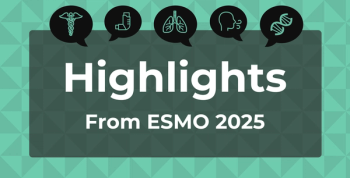
Possible Link Found Between Early Heart Failure and Pregnancy Complications
Pregnancy complications that include preeclampsia, gestational hypertension, pre-term birth, and low birthweight serve as possible indicators for greater risk of heart failure in the long term, as indicated by change in global longitudinal strain on echocardiogram.
Pregnancy complications that include preeclampsia, gestational hypertension, preterm birth (<37 weeks gestation), and low birthweight (<5.5 lb) serve as possible indicators for greater risk of early
Study results from the Coronary Artery Risk Development in Young Adults (
“There is emerging evidence that what happens during pregnancy may be a window into a woman’s future cardiovascular health, but there are still important knowledge gaps about the early trajectory following pregnancy complications and structural changes that happen before someone has an event,”
Study enrollment took place from 1985 to 1986, and the women had a mean (SD) age of 24.3 (3.6) years; 47% were black. In an
Adjustments were made for both pre- and postpregnancy risk factors, but GLS remained lower—worse by almost 1%—in the women who experienced an APO, especially among those who had a low-birthweight child. According to the study authors, this is a “magnitude of difference that has been shown in other studies to be associated with an increased risk for incident heart failure.” It also indicates the possibility of low birthweight being an “independent sex-specific risk factor for HF.” Whereas with preeclampsia and gestational hypertension, the greater risk of HF could be explained by the greater rates of high BP, obesity, and diabetes the women subsequently developed.
Mehta stresses the need for further research on the connection between APOs and early heart disease, which is an area of study seemingly pushed aside.
“Even though pregnancy complications have been included in some cardiovascular disease prevention recommendations and are named as a risk enhancer in the [American College of Cardiology/American Heart Association] primary prevention guideline, there needs to be more intensive surveillance and screening. We are missing women at high cardiovascular risk if we don’t make it routine practice to take adverse pregnancy outcomes into account when we inquire about patients’ cardiovascular history,” she cautioned.
An important study limitation was that the APOs were self-reported. Moving forward, the study authors recommend using medical records to confirm their occurrence.
Reference
Mehta PP, Colangelo L, Lane-Cordova A, et al. Adverse pregnancy outcomes and mid-life cardiac mechanics: the Coronary Artery Risk Development in Young Adults study. Presented at: ACC.20/WCC Virtual; March 28-30, 2020; Chicago, IL. onlinejacc.org/content/75/11_Supplement_2/11. Accessed March 27, 2020.
Newsletter
Stay ahead of policy, cost, and value—subscribe to AJMC for expert insights at the intersection of clinical care and health economics.







































